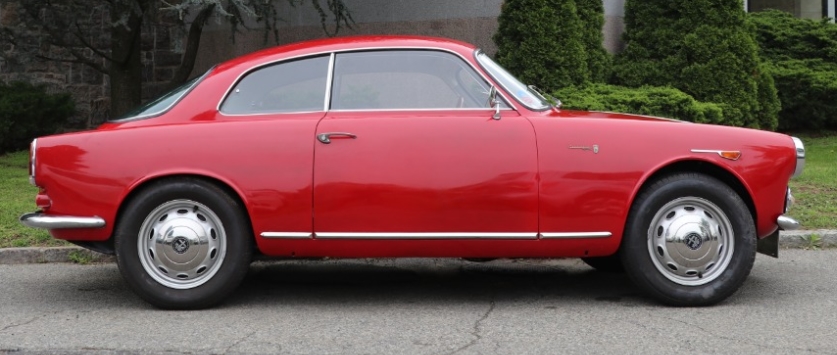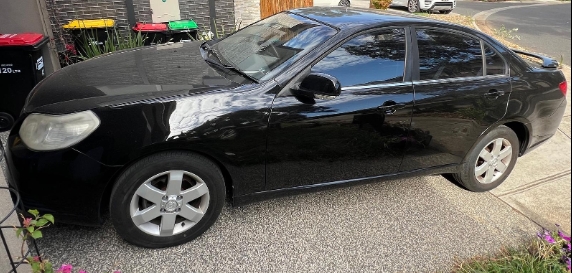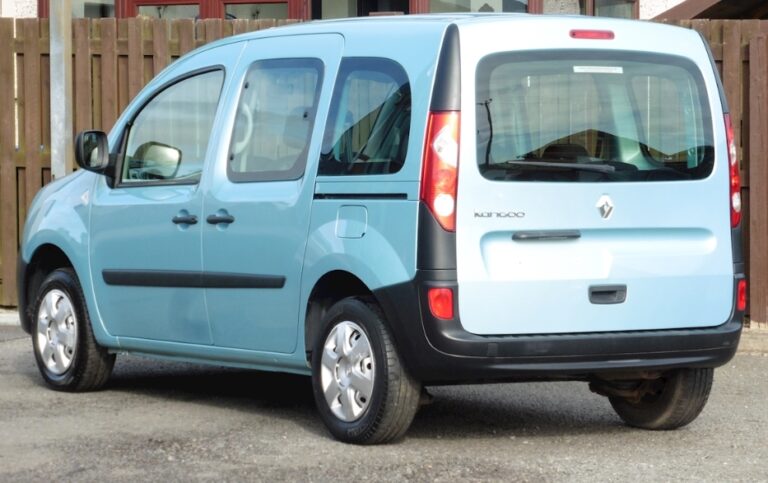The Three Lives of Romeo’s Juliet: The Evolution of the Alfa Romeo Giulietta
In the pantheon of automotive nomenclatures, few names evoke as much passion, beauty, and spirited performance as “Giulietta.” For Alfa Romeo, it is more than a model designation; it is a recurring chapter in its storied history, a nameplate resurrected across three distinct eras, each car perfectly encapsulating the spirit of its time while honouring a legacy of advanced engineering and inimitable Italian style. From the post-war darling that enchanted a nation to the wedgy performance saloon of the 1970s and the sophisticated modern hatchback, the evolution of the Giulietta is the story of Alfa Romeo itself.
Part I: The Original Sweetheart (Type 750 & 101, 1954-1965)
The story of the first Giulietta begins not with a sensible saloon, but with a moment of pure inspiration. Born from the ashes of World War II, Alfa Romeo needed a volume seller to secure its future. The plan was for a small family car, the Giulietta Berlina. However, development of its revolutionary engine was ahead of the chassis. To generate excitement and cash flow, Alfa Romeo made a brilliant decision: launch the sportiest version first.
In 1954, the world met the Giulietta Sprint, a breathtakingly beautiful 2+2 coupé penned by Franco Scaglione at Bertone. It was an instant sensation. Under its taut skin lay the heart of the project: a 1.3-litre (1290 cc) all-aluminium, twin-cam four-cylinder engine. In an era where pushrod iron blocks were the norm for small cars, this was motorsport technology for the masses, producing a lively 65 horsepower and a symphony from its exhaust.
The “Fidanzata d’Italia” (Italy’s Sweetheart) was truly born with the full range:
- Giulietta Sprint (1954-1962): The original coupé. Its lithe handling and rev-happy engine made it a giant-killer on road and track.
- Giulietta Berlina (1955-1963): The four-door saloon that the project was originally intended to be. It brought sports car dynamics to the family man, setting a template for the sports saloon that Alfa Romeo would perfect for decades.
- Giulietta Spider (1955-1962): An impossibly gorgeous two-seat convertible styled by Pininfarina. It became a symbol of “La Dolce Vita,” an icon of carefree Italian style beloved from the Italian Riviera to the coast of California.
For those demanding more, Alfa Romeo offered the Veloce (“Fast”) designation across the Sprint and Spider models. These featured twin Weber carburettors, higher compression ratios, and more aggressive camshafts, boosting power to an exhilarating 90 horsepower.
The 750 series (named for its internal project number) was a massive success, but Alfa was not done. The racing pedigree spawned two of the most desirable Alfa Romeos ever made:
- Giulietta Sprint Speciale (SS) (1959-1962): Another Bertone masterpiece, this was a long-tailed, aerodynamic marvel directly inspired by the B.A.T. (Berlinetta Aerodinamica Tecnica) concept cars. It was a road-going race car of stunning beauty.
- Giulietta Sprint Zagato (SZ) (1959-1961): Coachbuilder Zagato took the Sprint’s mechanicals and wrapped them in a lightweight, hand-beaten aluminium body designed for one purpose: winning races. The early “Coda Tonda” (round tail) and later, more effective “Coda Tronca” (Kamm tail) versions dominated their class in motorsport.
In 1959, the series was updated and re-designated as the 101 Series. The changes were subtle—a revised grille, interior updates, and mechanical refinements—but the core spirit remained. This first-generation Giulietta was more than a car; it was a cultural phenomenon. It established Alfa Romeo’s reputation for building cars with soul, blending advanced engineering with heart-stopping design.
.
THIS could come in handy for your auto garage (and everywhere else!):

.
Part II: The Wedge Warrior (Type 116, 1977-1985)
After a twelve-year hiatus, the Giulietta name returned in 1977 on a car that could not have been more different from its romantic predecessor. The Nuova Giulietta (Type 116) was a product of the turbulent “Years of Lead” in Italy and the angular, “wedge” design trend of the 1970s. It was aggressive, purposeful, and uncompromisingly engineered.
Designed by Ermanno Cressoni, its distinctive two-box shape featured a short, low bonnet, a high waistline, and a tall, truncated tail with an integrated spoiler. It was a form dictated by function and aerodynamics.
Beneath the sharp-creased bodywork lay a sophisticated chassis derived from the Alfetta. This was its defining feature and the source of its legendary handling balance. The Type 116 featured a transaxle layout, with the engine at the front and the clutch and five-speed gearbox mounted at the rear axle. This resulted in a near-perfect 50/50 weight distribution. The rear suspension was an advanced de Dion tube setup with inboard disc brakes to reduce unsprung weight. This was complex, expensive engineering for a family saloon, and it gave the Giulietta an athletic prowess far beyond its rivals.
The model range was defined by its engines, all classic Alfa Romeo twin-cams:
- Giulietta 1.3 (1977-1983): The entry-level model, featuring a 1357 cc engine producing 95 hp.
- Giulietta 1.6 (1977-1985): The core of the range, with a 1570 cc engine making a healthy 109 hp.
- Giulietta 1.8 (1979-1985): Offered more torque and performance with a 1779 cc engine producing 122 hp.
- Giulietta 2.0 Super (1980-1985): The top-of-the-line model, powered by a 1962 cc engine with 130 hp, identifiable by its alloy wheels and plusher interior.
The Giulietta received a minor facelift in 1981 (Series 2) with subtle trim changes, and a more significant one in 1983 (Series 3) which brought in new plastic bumpers, a revised dashboard, and a restyled grille.
The ultimate expression of this generation was the rare and formidable Giulietta 2.0 Turbodelta (1984-1985). Built as a homologation special for Group 4 rallying, Autodelta fitted a KKK turbocharger to the 2.0-litre engine, rocketing its output to 170 hp. With its blacked-out trim and blistering performance, it was a true “bad boy” Alfa and remains a highly sought-after collector’s item.
The Type 116 was a true driver’s car. Its sharp styling was divisive, and its ergonomics could be quirky, but for those who valued dynamic excellence above all else, it was one of the finest handling saloons of its era.
Part III: The Modern Gladiator (Type 940, 2010-2020)
After a 25-year slumber, the Giulietta name was resurrected for a third and final time in 2010. The Type 940 Giulietta was Alfa Romeo’s crucial entry into the fiercely competitive C-segment premium hatchback market, a stylish gladiator sent to battle the Volkswagen Golf and BMW 1 Series.
Launched to celebrate Alfa Romeo’s centenary, the 940 was a return to the curvaceous, sensual design language of the brand’s past. Penned by Lorenzo Ramaciotti at the Centro Stile Alfa Romeo, its design was packed with flair. The signature “Trilobo” grille was flanked by expressive LED daytime running lights, while the clean side profile was enhanced by hidden rear door handles—a clever trick borrowed from the Alfa 156 to create the illusion of a three-door coupé.
Built on the all-new “Compact” platform (also known as C-Evo), it was a modern front-wheel-drive hatchback packed with technology. At its heart was the Alfa DNA system, a drive mode selector that allowed the driver to choose between Dynamic, Normal, and All-Weather modes, altering the engine response, steering weight, and stability control intervention.
The trim levels and engine lineup evolved significantly over its decade-long production run, varying by market and year, but generally followed this structure:
- Launch Trims (UK market example):
- Turismo: The entry point, well-equipped with air conditioning, DNA system, and electric windows.
- Lusso: Added luxury features like dual-zone climate control, cruise control, and fog lights.
- Veloce: A sportier trim with lowered suspension, larger alloy wheels, and aluminium interior details.
- Later & Special Trims: Over the years, the lineup was refreshed and included names like Sprint, Super, Sportiva, Collezione, Speciale, and Business Edition, each offering a unique combination of aesthetic and equipment packages.
The engine range was comprehensive, featuring Fiat Chrysler’s advanced MultiAir technology:
- Petrol: A 1.4L TB (Turbo Benzina) in various states of tune (105 hp, 120 hp), and a 1.4L TB MultiAir (150 hp, 170 hp).
- Diesel: The popular and efficient 1.6L JTDm (105 hp, later 120 hp) and the more powerful 2.0L JTDm (140 hp, 150 hp, and 170/175 hp).
- Flagship – Quadrifoglio Verde / Veloce: The pinnacle of the range was initially badged Quadrifoglio Verde (QV). It was powered by the same 1750 TBi (Turbo Benzina iniezione) engine found in the 4C sports car, producing 235 hp (later 240 hp) and paired exclusively with Alfa’s TCT dual-clutch transmission in later models. In a 2016 facelift, the QV name was dropped, and the top performance model was rebranded simply as the Veloce, aligning with the new Giulia’s nomenclature.
The 940 Giulietta received two facelifts (in 2014 and 2016) which brought subtle exterior updates, primarily to the grille and badging to create a family look with the Giulia, along with upgraded Uconnect infotainment systems inside.
Despite its undeniable style and engaging driving dynamics, the Giulietta 940 faced an uphill battle against its German rivals. It remained a compelling choice for those who valued heart over head, a car that made you look back every time you parked it. Production ceased in 2020, seemingly closing the final chapter on this illustrious name.
Legacy of a Name
The three Alfa Romeo Giuliettas are not a continuous lineage but three distinct snapshots of automotive history, each bound by a common thread of Alfa Romeo spirit. The first was a post-war masterpiece of art and engineering. The second was a technically audacious and rebellious saloon. The third was a beautiful and passionate attempt to conquer the modern world. Each car, in its own way, stayed true to the promise of the badge: to deliver a driving experience that was more than mere transportation, but a passionate affair. The Giulietta’s story is one of beauty, innovation, and resilience—a perfect trilogy for one of motoring’s most beloved names.







